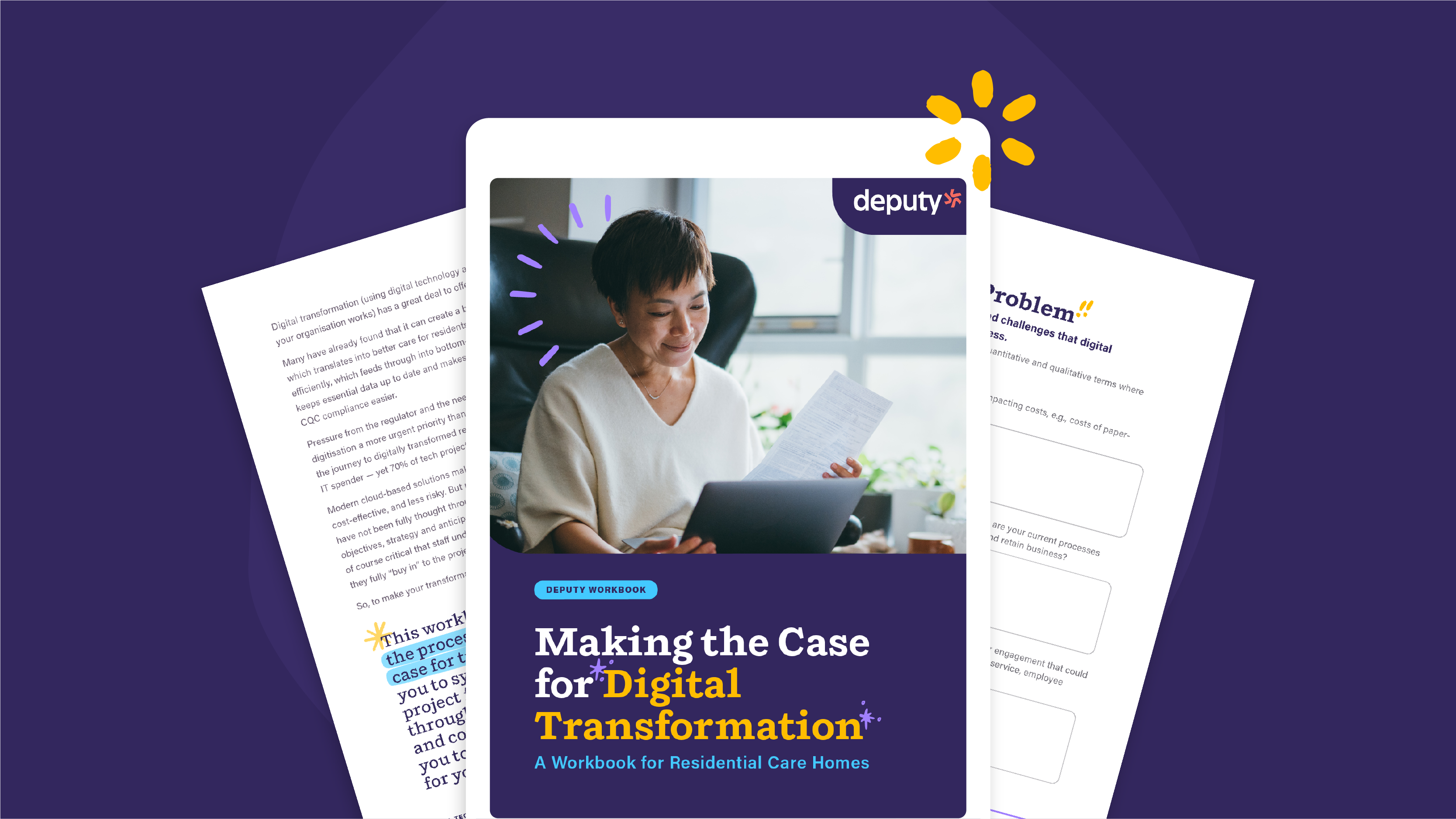The social care landscape is changing, and one of the most exciting developments is the increasing use of AI (Artificial Intelligence). While “AI” might spark visions of robot companions in care homes — initially seeming abstract or wildly futuristic — this powerful technology is already streamlining care home processes, improving resident experiences, and supporting your staff.
Let’s explore how AI is transforming how we deliver care and how it can benefit residents and staff.
AI: More Than Just a Buzzword
It’s important to understand that AI is not replacing human care but rather is a set of powerful tools. Think of it as your care home’s digital helper. AI-powered software for care homes can:
Free Up Valuable Time: In the UK, positive CQC ratings can make a huge difference to the success of your care business but monitoring and reporting can take significant resources and time away from caring.From automating paperwork to streamlining medication management, AI can handle many administrative tasks that eat up precious hours for staff. This allows them to focus on what matters most: providing compassionate care.
Personalised Care for Every Resident: AI can analyse resident data to create individualised care plans. These plans could suggest activities a resident will enjoy, flag potential health concerns early on, or adapt communication styles to suit each resident’s needs.
Proactive Problem Solving: By analysing patterns in sensor data or care records, AI can predict events like falls, potential hospitalisations, or even staffing shortages. This proactive approach lets you intervene early and prevent issues from escalating.
Predictive Staffing Insights: AI can analyse resident needs, historical data, and local events to forecast staffing requirements. This makes creating optimal schedules easy and ensures the right level of care at the right times.
Supporting Your Staff: Predictive AI-powered workforce planning saves time and reduces stress. Staff can easily see their schedules, swap shifts, and communicate clearly—all features that boost morale and help them feel more in control of their work lives.
Artificial Intelligence in Home Care Settings
AI’s positive reach extends beyond traditional care homes to home care settings. Here are a few examples of how it’s being used:
Virtual Companions: Yes, the virtual companions we mentioned earlier are coming. AI-powered virtual assistants and social “robots” can help reduce loneliness and provide companionship for individuals receiving care at home, especially in between care worker visits.
Smart Sensors and Monitoring: Discreet smart home sensors combined with AI can provide insights into daily routines. Gentle reminders for meals or medications to support independence, while pattern recognition can identify potential falls or changes in health status before they become crises. Smart pill dispensers with AI can ensure medication adherence and reduce the risk of missed doses, particularly for those who manage their medications independently.
Preventing Falls: AI-powered cameras and sensors can detect subtle changes in resident movement that might indicate a higher risk for falls. This allows you to intervene with preventative measures, keeping residents safer.
What Are the Challenges of Artificial Intelligence (AI)?
With any new technology, it’s important to consider potential challenges alongside benefits. Here are some key things to keep in mind with AI in social care:
Data Privacy and Security: AI relies on data, so choosing AI solutions with robust data security protocols is vital. Safeguarding resident data and ensuring AI is used responsibly are priorities for any solution you implement. Choose those designed with privacy in mind and that adhere to strict regulations.
Maintain Human Touch: AI should always augment, not replace, the expertise and compassion of care staff. The human elements of care - empathy, connection, and intuition - are irreplaceable. It’s about empowering staff, not replacing them.
Cost and Accessibility: While AI solutions are improving over time, it’s essential to ensure that they are accessible to care providers of different sizes and budgets.
Explain AI: Staff and residents should understand how AI is used in their care setting. Consider implementing and sharing an AI data policy with your business. Transparency builds trust and confidence in these new tools.
Three AI Perspectives
There are three personas in a care home interacting with AI, challenging its use, and experiencing the benefits or consequences of AI in your care home. Each persona has specific expectations from AI:
The Caregiver’s View: AI helps streamline tasks and provide a clearer picture of resident needs, giving staff more time for meaningful interactions.
The Resident’s View: AI can support autonomy, personalise care plans, and offer a friendly “voice” when companionship is needed.
The Manager’s View: AI can drive operational efficiencies, assist in accurately forecasting staffing needs, optimise rotas, and support the creation of happier, more efficient care settings.
AI & Deputy: A Powerful Combination
At Deputy, we believe AI’s greatest strength is its ability to help care providers and those they serve. Our advanced workforce management platform uses predictive AI to simplify scheduling, reduce administrative burden, and empower your staff.
Our position is that AI has immense potential to reshape social care for the better. By integrating AI responsibly and prioritising human connection, we can create a care model that benefits residents, supports care professionals, and makes social care more efficient and sustainable. Think of it as a partnership where AI and human caregivers work hand-in-hand.
Contact one of our experts today to learn how Deputy’s AI-powered rota software can help you plan staffing more efficiently and deliver high-quality care.



